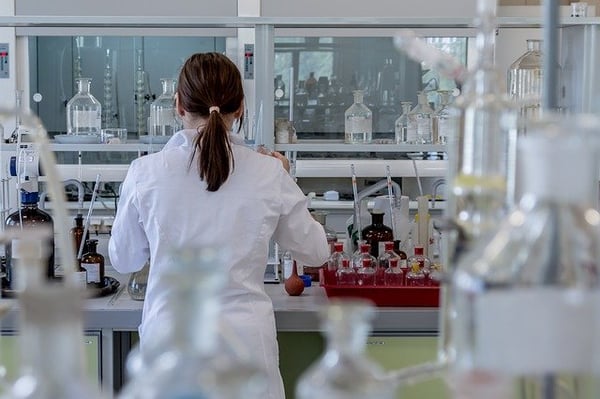Despite demanding market conditions and some negative announcements that had a significant effect on stock performance, the second half of 2019 was overwhelmingly positive for European biotechs in many areas. Created by the Euronext Corporate Services Post-Listing Advisory team in collaboration with BiotechBourse, the Biotech Barometer H2 2019 was released earlier this year and provided some interesting insights into the biotechs listed on Euronext markets. Representing a combined market capitalisation of €24.4B, these 52 biotechs are listed in Paris, Brussels, Amsterdam and Dublin, and focus on the fields of diagnostics and therapeutics.
Regardless of a rise in the sector in December 2019, which is not taken into account in this report, and a relatively stable H1, the biotech market performance ended 2019 down -4.0% overall, driven by the -10.7% fall in the second half of 2019. The drop in performance can be attributed mainly to the French biotechs, which make up the majority of the BiotechBourse index (73%), as they ended 2019 -17.0% down.
There were several major announcements in the second half of 2019 that had significant impacts on the stock performance of European biotechs. Of the 59 main announcements, 75% were positive in nature, but only had a +19% average impact on share price, while the remaining 25% were negative and had a staggering -264% average impact. Companies like Asit and Oxurion’s announcements around clinical results saw the most severe drops in stock price at the end of the trading day (-42.9% and -82.3% respectively), while Genomic Vision’s partnership announcement at the end of July resulted in a 270.9% increase. Just as in H1 2019, French biotechs made up the majority of main announcements with 66%, followed by Belgian biotechs with 29% and the Dutch with 5%.
On the positive side, the second half of 2019 saw an increase in total market capitalisation of Euronext-listed biotechs of €7.4Bn compared to H1, bringing the total to €24.4Bn at the end of 2019. This was mainly driven by the growth of two Belgian biotechs (Galapagos +€5.95Bn, and Argenx +€1.40Bn). All 9 Belgian biotechs listed on Euronext now make up 77% of the total market capitalisation, with the 38 French biotechs representing 18% (a drop of 12% compared to H1), the 3 Dutch biotechs 4%, and the 2 Irish biotechs less than 1%. The report also shows a preference by investors for large caps, much to the detriment of the smaller biotechs. The top 10 biotechs valued at over €200M increased their valuation by an average of 10.3%, while the remaining 42 companies valued at less than €200M saw a decline of -15.7%.
On the subject of investors, we saw some interesting trends in the second half of the year. Firstly, the number of identified institutional investors went up significantly to 420 from 375 in H1 2019, however, the investor turnover also remained high with 20% leaving the sector. Secondly, there was a strong representation of North American investors, with 30% of the 120 new investors identified in the second half of the year coming from North America. Overall, the concentration remains high with the average number of biotechs per investor portfolio up to 5.2 in H2 2019 from 4.7 in H1 2019.
 The biotechs listed on Euronext appear to have an overwhelmingly mature pipeline, with 93% being at least in Phase 2 (working on proof of effectiveness of their product). Of those, 43% are in Phase 3 (the last step before placing a product on the market). This bodes well for increased confidence in the sector as a valuable investment opportunity. This trend is strengthened by the fact that one third of Euronext-listed biotech companies have either an approved product or one that is pending approval, and nearly two thirds have signed at least one marketing or collaboration agreement.
The biotechs listed on Euronext appear to have an overwhelmingly mature pipeline, with 93% being at least in Phase 2 (working on proof of effectiveness of their product). Of those, 43% are in Phase 3 (the last step before placing a product on the market). This bodes well for increased confidence in the sector as a valuable investment opportunity. This trend is strengthened by the fact that one third of Euronext-listed biotech companies have either an approved product or one that is pending approval, and nearly two thirds have signed at least one marketing or collaboration agreement.
While 2019 saw no biotech IPOs in continental Europe, we did observe the highest half-yearly amounts raised via secondary offerings by Euronext-listed biotechs in several years: €1.1Bn, compared to €547M in H1 2019. Overall, the results of the report seem to indicate good signs for the year to come and a continued investment interest in the sector.
Related articles
-
Which ESG Metrics Should You Track? A Comprehensive Guide
Read the article -
New IESBA Standards – The Importance of Ethical Standards in Sustainability
Read the article -
The Benefits of Webcasting Your Capital Markets Day
Read the article
Share this post



